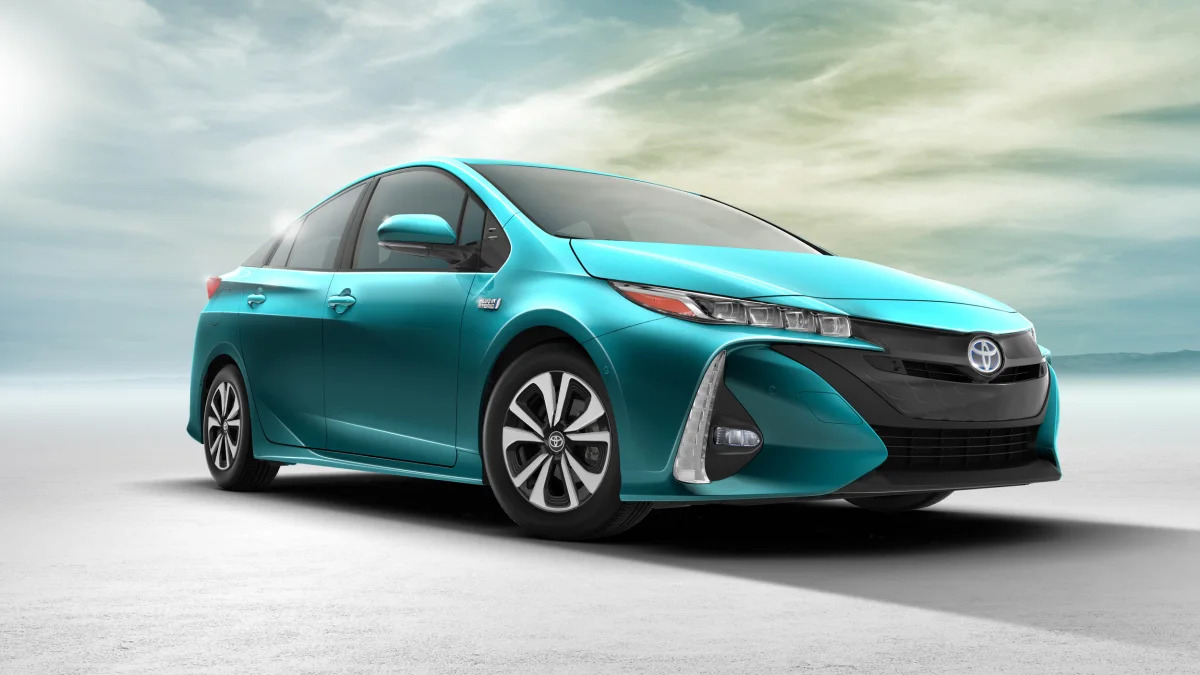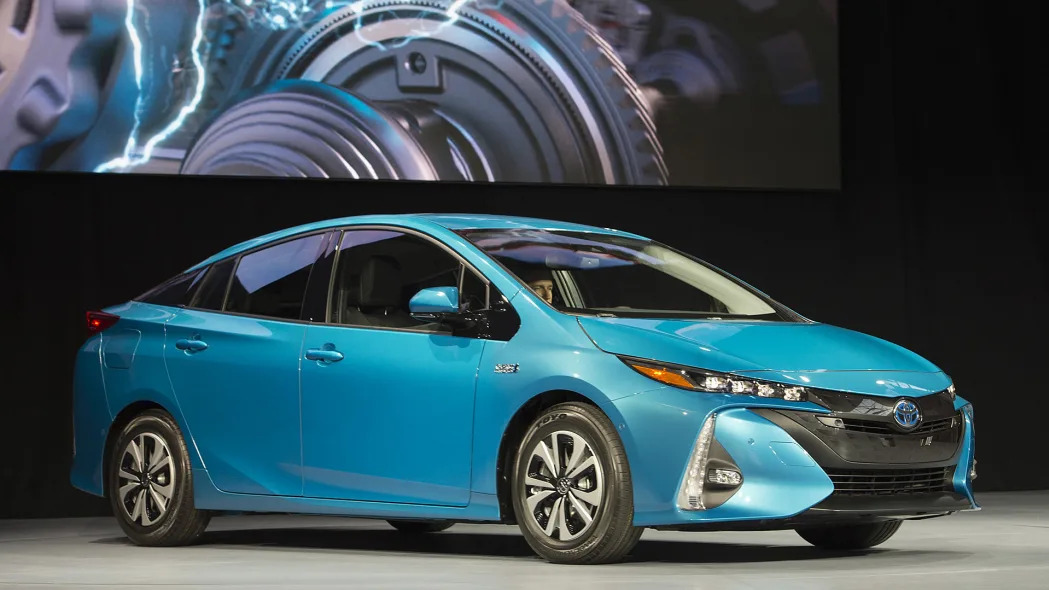Put the new Toyota Prius Prime next to the new, standard fourth-gen Prius and it's impossible to mistake one for the other. The front and rear ends are completely different, even if the two cars are basically visually identical between the A- and C-pillars. In that area, the Prime has a glossier appliqué on the B-pillar, but that's about it. What's most interesting about the new Prime, though, is how much has changed with the powertrain and why those changes were made.
Toyota isn't saying what the estimated MPG will be for the Prime, but the target is to at least match the fuel economy of the fourth-gen Liftback model, which is 52 combined mpg. Toyota is going public with its estimate of 120 MPGe for the Prime, though. "When the first plug-in Prius was developed, the engineers had an eye on overall efficiency," Kokes said. "They wanted to make sure that you didn't add a big battery and sacrifice hybrid MPG. I think this is similar. I think the number everyone needs to focus on is that MPGe number. The reason this thing has that high number [120 MPGe] is because they didn't go like, 'Oh, we're just going to give you a 75-mile battery, triple the size, take all your storage space."
Nathan Kokes, Toyota's brand manager for advanced technology vehicles, told AutoblogGreen that Toyota engineers did a lot of reading and listening as the Prime was being developed over the last few years. Since the Prime is the evolution of the first-gen Prius Plug In, that's the model that the Prime had to improve. "We continually pay attention to blog posts," he said. "We look at Prius Chat. We also do a lot of customer research and focus groups, etc. We hear consistently how people use the vehicle in everyday situations. For some people, 11 [miles] was just fine. They were like, 'Okay, I have a five, six mile commute, I can make it almost there and back.' With workplace charging, it was a piece of cake. But for others, it wasn't enough. In the marketplace, people keep saying bigger and bigger numbers. Our message is, we wanted to showcase that you get a bigger number with this vehicle, but also retain really high MPG.""In the marketplace, people keep saying bigger and bigger numbers." - Nathan Kokes
Toyota isn't saying what the estimated MPG will be for the Prime, but the target is to at least match the fuel economy of the fourth-gen Liftback model, which is 52 combined mpg. Toyota is going public with its estimate of 120 MPGe for the Prime, though. "When the first plug-in Prius was developed, the engineers had an eye on overall efficiency," Kokes said. "They wanted to make sure that you didn't add a big battery and sacrifice hybrid MPG. I think this is similar. I think the number everyone needs to focus on is that MPGe number. The reason this thing has that high number [120 MPGe] is because they didn't go like, 'Oh, we're just going to give you a 75-mile battery, triple the size, take all your storage space."
The Prime has a top all-electric speed of 84 miles per hour. The first-gen Prius Plug In could only hit 62 miles per hour before the engine roared to life. That meant that every time you tried to get on the highway, you had to burn some gas. Drivers told Toyota they were not pleased with this arrangement, Kokes said. That's why the new powertrain uses additional capacity from the two electric motors and a one-way clutch to almost double the electric power that reaches the wheels. "Before, one of the motors always drove the propulsion of the wheels, and the other was a generator with regenerative braking," he said. "The one-way clutch allows the engine to lock and then the other motor can help boost the propulsion performance. That allows it to have more kilowatts going directly to the wheel. It goes from 37 kW [in the first-gen Prius Plug In] to 68."
With all of this extra electric power, the Prius Prime now defaults into EV mode. "You get in the car, it's in EV," Kokes said. "If you charge it up, you're in EV, and you will remain in EV. If you want to, you can hit the EV auto mode. That allows the engine, sometimes, to kick on if it deems it more efficient to that. Sometimes if you're really flooring it, it might be more efficient to actually run the engine just for a short period of time than to kick off. A lot of people want only the EV experience, so we made this an option.""A lot of people want only the EV experience."
Oh, so a lot of people are telling Toyota they want an all-electric experience, are they? We had to ask Kokes if this meant that there might be some sort of future all-electric vehicle from Toyota. He said, "Can't comment on future plans, but yeah. Absolutely."
Back to the Prime, which is only a four-seat car. Making the Prime seat only four helps with the overall efficiency, Kokes said. Sure, there's a 3.3-kW charger taking up some space under the rear seat, but that could be moved if necessary. But, by eliminating the possibility of someone sitting in the middle back seat, the engineers could take out some structural weight. "They'd have to add more reinforcement just based upon how the tolerance is of passengers," Kokes said. "You've got to add another 250 pounds right there for that passenger because of us big Americans. This design, it was better to have four seats. In the future, there might be some changes, but for right now [this is it]."
With all of the changes that were made to the Toyota Prius Prime, Toyota gave it a name that is supposed to express that this PHEV will, "be the best Prius," Kokes said. It's a name, "that really sounded like people would resonate with" it, unlike the C and V names that were used last time. "After we saw the design sketches, we thought it had a lot of character. A letter didn't give character. We wanted something that had some meaning behind it.""We wanted a name that had some meaning behind it."
Related Video:












Sign in to post
Please sign in to leave a comment.
Continue